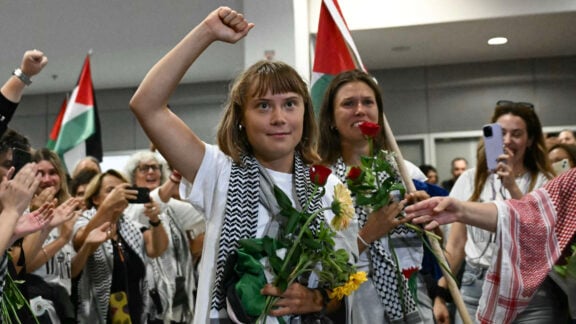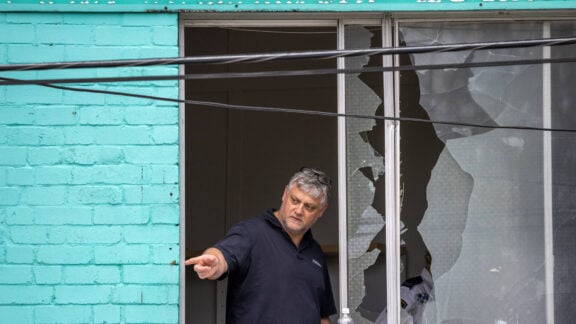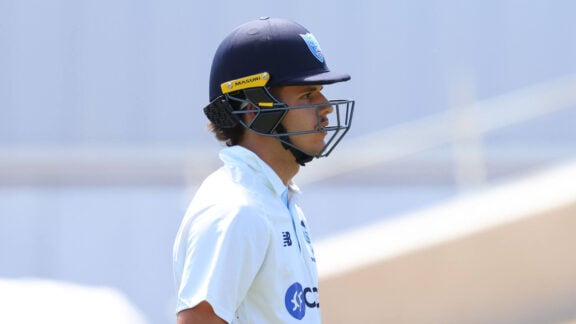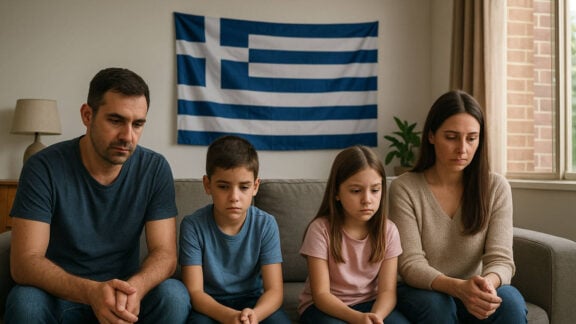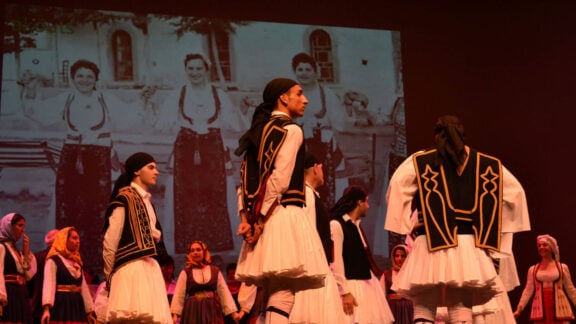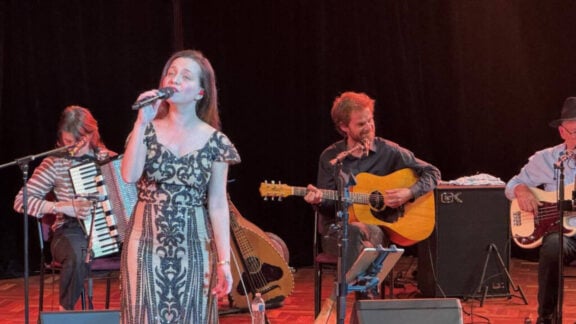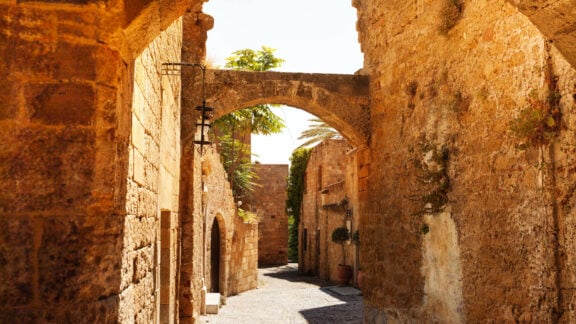Dr Ian Syson lectures in literary studies at Victoria University in Melbourne’s west. For over a decade, the South Melbourne supporter has published many scholarly articles and newspaper reviews on Australian soccer.
Now he has a book out, The Game that Never Happened, in which he channels the spirit of legendary Socceroo Johnny Warren, whose memoir, Sheilas, Wogs and Poofters highlighted how those who played and supported soccer were marginalised.
While Warren’s book centred on the 1950’s up until his death in 2004, Syson tells the story of soccer before that period and how those roots date back to the 1860’s. And in doing so, challenges the narrative that football has always been a foreign game that was only played by ethnics.
“What my book says is that there is a pre-history to soccer in Australia that is fully developed,” he says.
“A fully passionate game that ends up petering out before the Second World War. It is then rescued and improved by the continental European migration. But my book is only about that period when soccer falls into the doldrums in the 1930’s and of this amazing story that is forgotten.”
In Victoria, the seeds of organised football were first sowed in the 1800’s and South Melbourne becomes the sport’s epicentre.
“The first recorded game of soccer in Melbourne with soccer rules was in 1883,” Syson tells Neos Kosmos.
“Later on that year, NSW came to play against Victoria and the first game they played was in East Melbourne and the second game they played was at Lake Oval exactly where South Melbourne play today.”
In 1884, a number of teams are formed, including one from South Melbourne who – like the former NSL powerhouse – also play in a blue strip. Other teams include Prahran, Carlton (who played in red and black), Richmond (who played in white) and a team from Albert Park.
The heart of football in Melbourne
In the book, Syson reveals how both South’s former home Middle Park and its current home Lakeside became a hub of Victorian soccer.
“South Melbourne Oval is where many of the interstate matches, practise matches and scratch matches were played. As well as in, and around, Middle and Albert Park,” he says.
“The Middle Park Hotel was a meeting place for Annual General Meetings for example. So soccer was either played or organised in the precinct and after that period, a number of South Melbourne teams have come and gone.”
Current South Melbourne FC A-League Bid Chairman Bill Papastergiadis told Neos Kosmos that this historical link adds even more weight to the club’s A-League aspirations.
“My take on that is that nothing has changed,” he said.
“It’s still the heart of football in Melbourne. It’s not a coincidence that’s the case because the Lakeside precinct has 2.4 million visitors a year and to have its historical connection going that far back just emphasises that importance to football and to Melbourne. It reinforces our belief that Lakeside is the premier sporting precinct and should be the next home for an A-League club.”
While a straight line can’t be drawn from the current South Melbourne entity with the club that was formed in 1880’s, South’s geographic and spiritual link to football in Victoria is undeniable.
“South can’t claim the original South Melbourne team, but it can claim to be the custodian of a tradition,” Syson says.
“As a South supporter I don’t think we can claim to be the same club but we can claim to have played in the same place as the very first South Melbourne club did. What they can also claim is that they play at the home of Victorian soccer.”
A decade after the first clubs were formed, Harry Dockerty surfaces. In his book, Syson writes about how this is a period that sees soccer’s popularity and growth in Melbourne flourish as crowds of between 2,000 and 4,000 flock to Albert and Middle Park.
Once again South Melbourne is where much of the action takes place.
“Every time football resurrects, South Melbourne resurrects,” Syson says. “This happens in 1909 and it takes off like wildfire. Every moment has a leader where somebody takes up the reigns and takes up the cause and Harry Dockerty donates the Dockerty Cup. He is actually the captain of St Kilda, the team that makes the first final and even though he lost he presents the cup to the opposing captain after the game.
“Soccer really grows in Melbourne and around South Melbourne but then World War One interrupts it completely and there is very little soccer played in Melbourne at that time.”
The impact of war and migration
One key aspect of Syson’s book is the untold story of the many soccer ANZACS who made the ultimate sacrifice for their country while fighting in World War One. Syson reveals how soccer was not only played at Gallipoli, but was used as a means of refuge, recovery and relaxation by Australian troops in the aftermath of the fighting. This can be seen with the image of Australian troops that played soccer on the Greek island of Lemnos in December 1915.
“Greece allowed the allies to use Lemnos as a staging post and as a place of recuperation when they left Gallipoli,” Syson says.
“It was a strategically important place in terms of supply and preparation and the withdrawal as well. That photo is of them after the period of withdrawal and a lot of the soldiers were recovering from the horrors of that campaign.”
The book also has a quote from Geelong VFL footballer Leo Healy who speaks about his recuperation in Lemnos after having a tumour removed from his leg – resulting from an injury at Gallipoli.
Healy described Lemnos as “quiet, but the natural harbour is beautiful. The men chiefly amuse themselves playing cricket and soccer football.”
After the war, soccer struggles due to the many causalities to soccer players who joined up to fight in the conflict. The book examines how between 1920 and 1934 the game was cast to the margins of Australian identity and doesn’t recover until the 1950’s, when the migrant boom sees football flourish again.
While not attempting to denounce the profound impact of European migration on the game, Syson writes about how the rise to dominance of the continental clubs enabled the forgetting of soccer’s pre-war culture.
“In my book I actually blame South a little bit for forgetting,” he says.
“Because South Melbourne to some extent forgets its own history, forgets its own Anglo and Jewish history in the way it exists today. It should remember its history because it makes it a stronger club; it gives South a stronger claim to join the A-League.
“But even though there is a forgetting to some extent, they have acknowledged their history when they have played with a white strip and red V – which is the heritage strip that is a tribute to their history.”

However South’s A-League Bid Chairman Bill Papastergiadis doesn’t fully agree with Syson’s claims.
“On that point our A-League bid document emphasises the multicultural roots of the club,” he says.
“And in particular develops a theme of that strip with some continuity into the A-League. So that comment couldn’t be further from the truth. We acknowledge that we were merged with three different other clubs all from different backgrounds and we celebrate that.
“Our A-League bid reflects the continuity of that and the strip will reflect that historical connection which I can’t go into at this time. But let us hopefully win the A-League bid and I can unveil it.”

